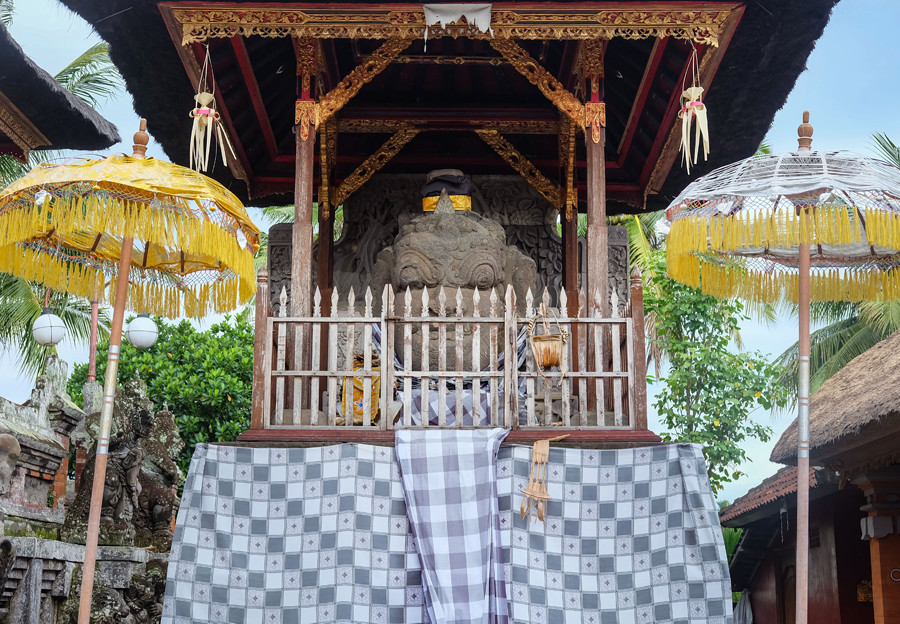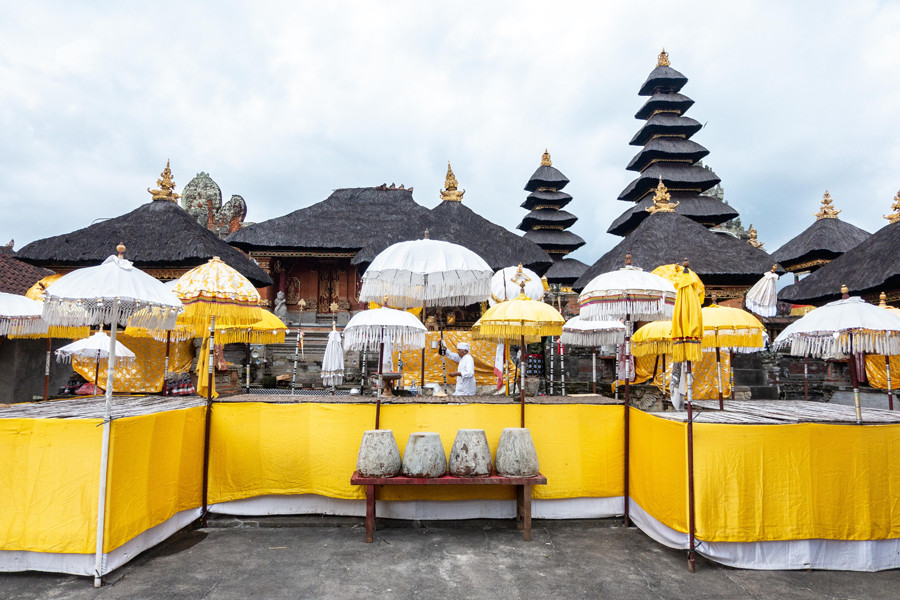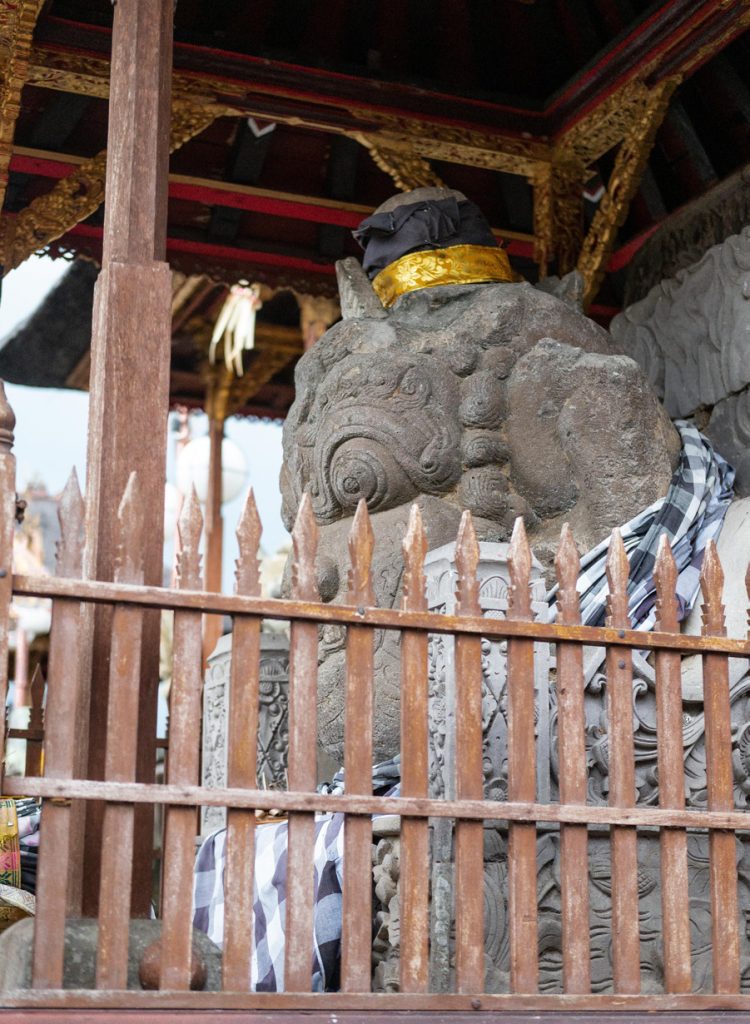Kept in one of the towers of Pura Gaduh in Blahbatuh is a statue of a giant, which legend says had parts chopped off as a peace offering to ease the tension between the temple’s priest and his congregation.

Pura Gaduh, or known as Pura Kebo Iwa amongst the locals residing around the temple’s areas, is an architectural brilliance. And just like any other temple in Bali, Pura Gaduh also has a historical legacy; for this temple in particular, it’s in the form of a statue.
But before we dive deeper into the details of the statue, the history of the said giant must be told, especially since there hasn’t been a mention of his name so far in this section.
Centuries ago in Bali, a man and his wife who had been married for years were longing for a child. They constantly sent prayers to the gods, begging the almighty to bless them with a baby to bring joy to their house. Years later, the gods finally answered the couple’s prayers, and a baby boy was born.
But unlike other babies, the baby boy grew so much faster than he should. He ate a lot more food than the adults, so much that his parents couldn’t afford it any longer. Luckily for the giant baby, being born on an island known for its friendly people, the neighbours worked together to provide Kebo Iwa the large amounts of food he required. They even went further by providing Kebo Iwa shelter, building him a house when he entered adulthood and became a real giant.

To express his gratitude to the villagers, Kebo Iwa built a dam all by himself, dug wells, and protected the villagers from wild animals. He even defended the village from the attack of Majapahit, and invading kingdom from Java that conquered many kingdoms in Bali. It is also said that the rock relief at the famous Gunung Kawi in Tampaksiring was carved by Kebo Iwa using only his fingernails in the 14th century.
Back to the temple, Pura Gaduh was built in the 7th century by Patih Wijaya Katong. The name of the temple was derived from the word “gagaduhan”, meaning shrine to the king. That’s right, this temple used to be a place where a king ruled, before it was transformed into a worshipping site.
Kebo Iwa renovated the temple in the 12th century. The villagers, who prospered from what Iwa had done for them, finally considered the giant as a holy being. The villagers then came to Iwa and asked for the giant to erect a statue of himself in the temple. And being a humble giant, Kebo Iwa said no to the idea, for despite all that he had done for the villagers he didn’t see himself as holy or at the very least important that a statue of himself needed to be erected in Pura Gaduh.
However, the villagers were being very stubborn about this; they kept insisting Iwa to build the statue. The news of the villagers’ strong determination finally reached the temple’s priest, and so he confronted them. The plan became the source of tension between the priest and his people.
Kebo Iwa, being a giant on the outside but noble and loving on the inside, decide to meddle when he heard about the tension between the priest and the villagers. Iwa then went to see the priest and the villagers who were at that time were arguing the relative merits of the proposed statue.

But as Kebo Iwa tried to come in between the fight and speak his mind, he fell into a trance. He stood up, put one hand on either side of his head and lifted it up high above his body. All of the sudden it became clear to everyone in attendance. The statue of Kebo Iwa needed to be erected in the temple, but the giant’s humility forced him to limit it to only his head. The solution was clear and Iwa acted on it, much to the delight of his followers. The priest, too, was placated.
This statue of Kebo Iwa’s head is still on display in this temple and, it is because of this tale that Pura Gaduh is also known as Pura Kebo Iwa. This monumental statue survived the earthquake of 1917 that destroyed the original temple structure. The temple is located in Blahbatuh village, some 10 kilometres west of the town of Gianyar. The interior of the temple is structured in the the usual Balinese temple configuration, except for the rather fanciful carvings which can be seen on the main stairway.






